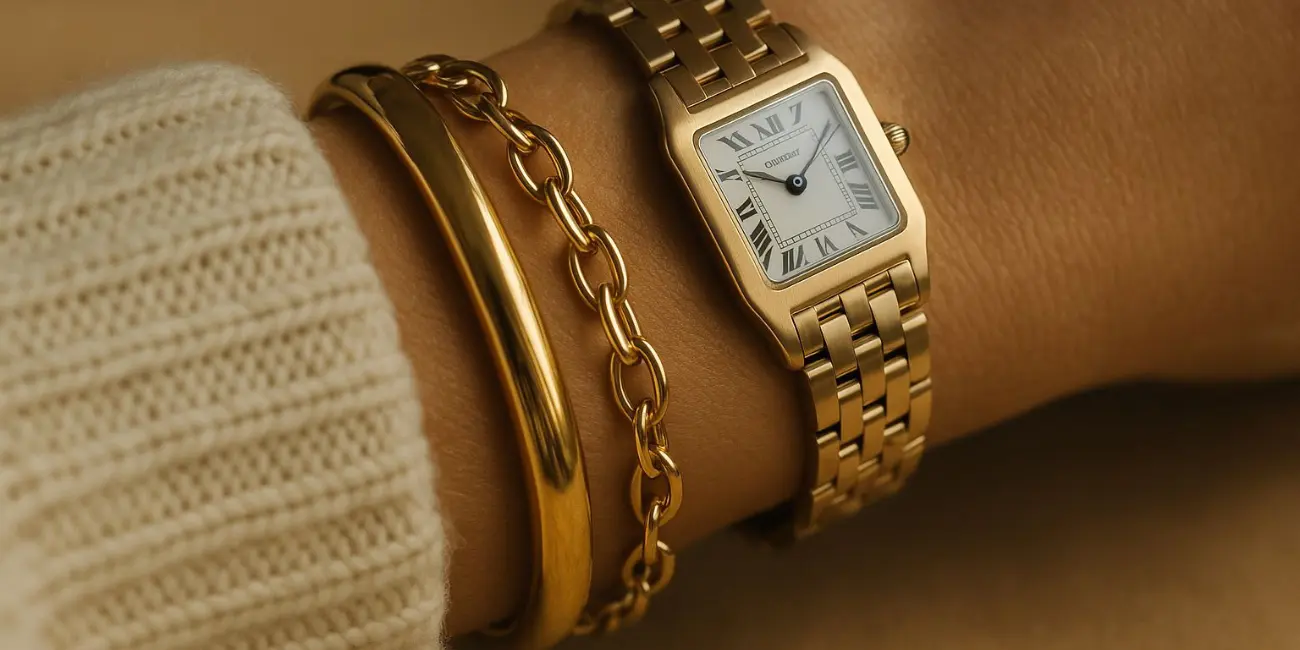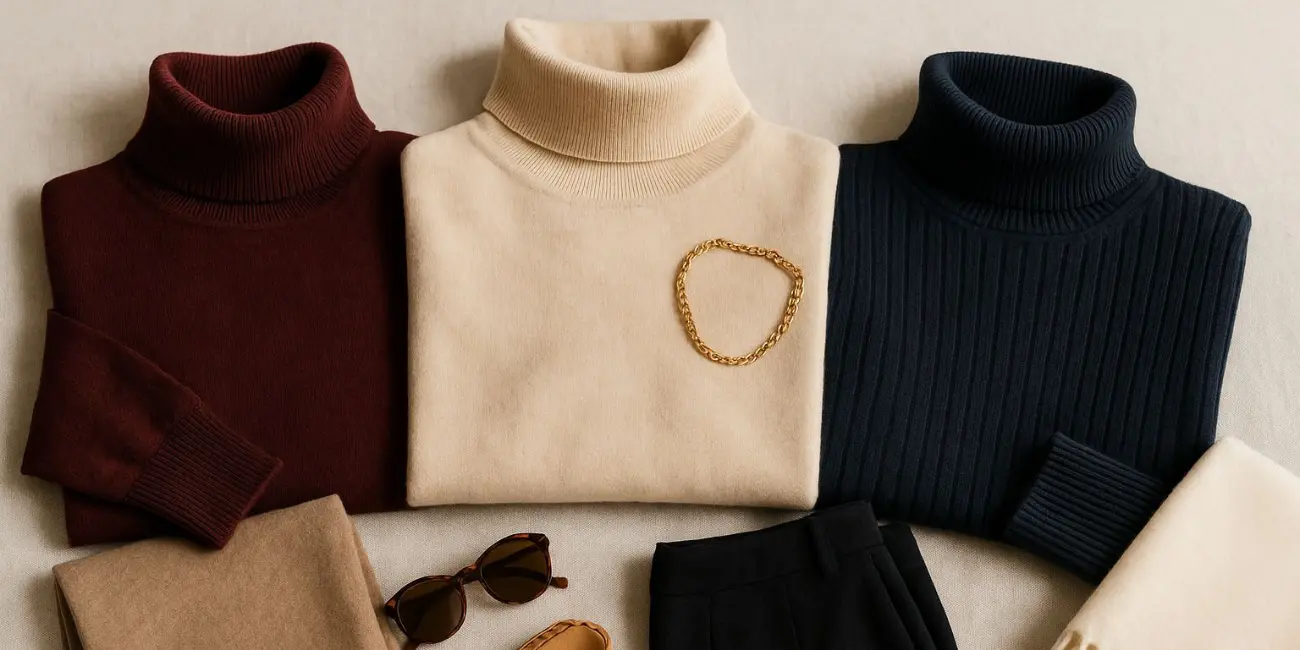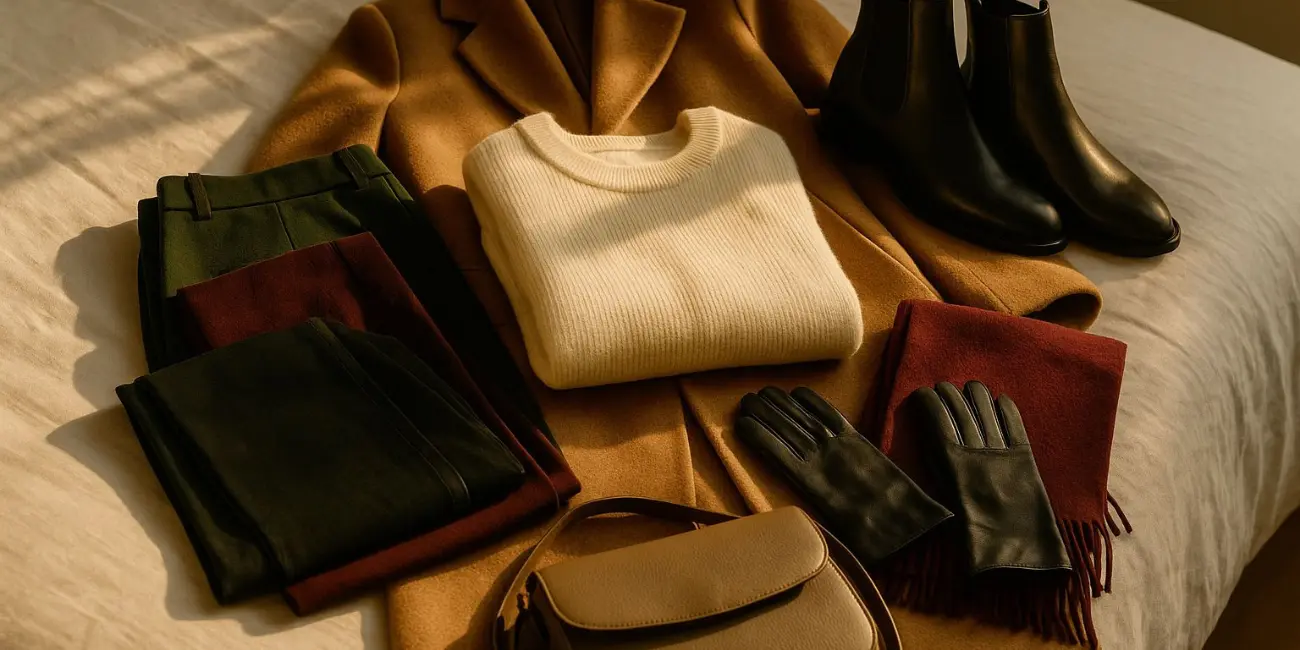It started with a mess.
Not a big one. Just the usual: sweaters slipping off hangers, scarves tangled together in a drawer, a pair of trousers I hadn’t worn since last winter quietly taking up space. I was standing in front of my wardrobe one morning, already late, already irritated, and thought: Why does getting dressed feel like work?
So I gave myself a small challenge — just for a month. Wear fewer pieces. Repeat outfits. Stick to a quiet little edit of clothes I already loved. No shopping. No new purchases. Just… simplicity.

Week one felt weird
The first few days, I was so aware of what I wasn’t wearing. That navy silk shirt I always thought I should wear more and i absolutely adore. A pile of denim I’d collected “just in case.” I kept opening my drawers and then quietly closing them again.

But by the end of the first week, I noticed something small: I was getting dressed faster. No second-guessing, no trying on five things and discarding them on the bed. Just pulling on what worked, grabbing my keys, and getting on with it.
Then came the clarity
Something funny happens when you wear the same few things over and over — you stop noticing them. Not in a careless way, but in a comforting one. Your clothes become part of the rhythm of your day instead of a puzzle to solve.
One pair of trousers, one cardigan, one coat. Washed, worn, repeated. I started walking more. My mornings felt quieter. I stopped checking what I looked like in shop windows.
It wasn’t about the clothes anymore. It was about the space they gave me.

What stayed with me
I thought dressing simply might feel boring. But it didn’t. It felt freeing.
The pieces I reached for — a soft wool sweater, a structured black pant, a crisp white shirt — weren’t flashy. But they were mine. They made me feel steady. Like I didn’t need to prove anything.
I stopped dressing for variety and started dressing for clarity. And honestly, that was enough.
I didn’t throw everything out
When the month ended, I didn’t overhaul my closet or swear off new things forever. But I did start asking better questions.
- Would I wear this three times this week?
- Does this feel like me now, or me five years ago?
- If I lost this item, would I miss it?
Some pieces passed the test. Some didn’t. And slowly, my wardrobe shifted into something a little quieter. A little easier to live with.

Just in case you’re curious
If I had to do it again (and I probably will), these are the pieces I wore the most:
Soft, timeless, and pairs with everything I owned that month.

Structured but easy. I wore them more than anything else.

Crisp and quietly polished — the kind of shirt that made every outfit feel more intentional.

Structured but soft — the kind of piece that instantly pulled everything together.

Simple and classic, with a black toe that made even jeans feel elegant.

Nothing revolutionary. Just simple, good things.
People Also Ask
What does it mean to dress simply?
It means choosing fewer, better pieces you feel good in — and letting go of the pressure to keep reinventing your look every day.
Is it boring to wear the same outfits often?
Not at all. Repeating outfits that work gives you more freedom to focus on what really matters in your day.
How many pieces do you need to dress simply?
It depends on your lifestyle, but around 10–15 versatile items are enough to carry you through a month with ease.
Can simple dressing still be stylish?
Of course it can! Simplicity is often the most elegant choice — especially when you focus on fit, fabric, and feel.












